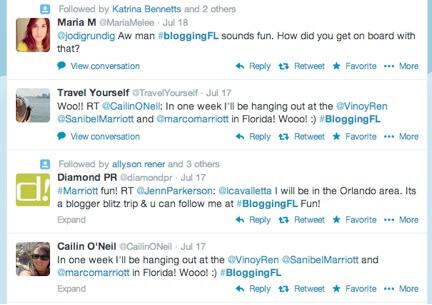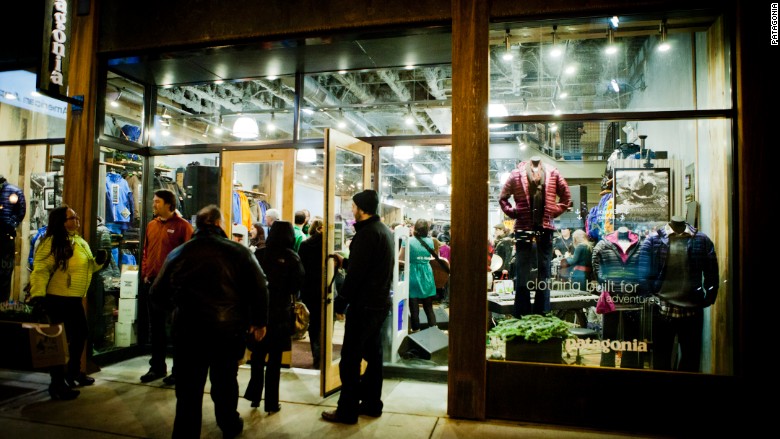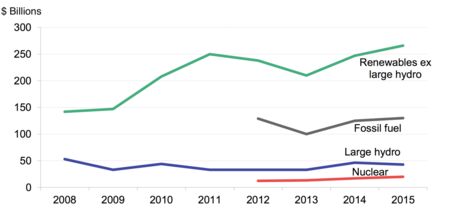It makes sense that we start off by looking at what blogger outreach actually is, and why it’s such an important marketing tactic.
Blogger outreach means coming into contact with already established social media personalities and asking them to promote your business. In a sense, it’s not much different than bringing in any notable celebrity to support your brand.
Influencer marketing, however, is different in that you can reach very niche audiences. Each community has a number of bloggers they follow, based on the field these bloggers work with. These fields can range from popular culture in general to astronomy, or just a specific set of gadgets.
It is more important than ever to create a strong network as recommendations are the most effective marketing strategy in our era of technology. The public is researching the products or blogs they want to adopt in their lives. They read reviews on popular websites about your blog before deciding to connect with you.
This makes blogger outreach an extremely powerful marketing strategy. But it’s also trickier than other traditional marketing strategies. Bloggers are not like your conventional celebrities.
Influencers maintain their audience’s loyalty by providing them with their own, unbiased opinions. Some influencers might be skeptical about working with a company since this can jeopardize their credibility.
The relationship between a blogger and company tends to be much more personal. This new wave of influencers doesn’t usually have a team of PR experts backing them up and helping them manage their public image. You’ll probably have to discuss with them one on one. This can be useful since you can address their concerns directly and bring in a personal touch to your conversation.
This approach worked very well for the whisky brand, Lagavulin. They asked Nick Offerman to promote their product. Together they created the #MyTalesofWhisky campaign.
The campaign seemed to be crafted around Offerman’s dry, manly-man persona, rather than around the product. This campaign managed to promote both Lagavulin and Offerman’s powerful character, by creating a series of stories that centered around his own interests, and featured Lagavulin as part of the setting.
On the other hand, they might not be so adept at spotting PR opportunities. And they also have to worry about the integrity of their online persona. And this usually tends to come first on their list of priorities. So you have to handle the whole process of blogger outreach with care.
Now that we’ve seen what blogger outreach presupposes, we can move on to look at some of the ways influencers can be approached, and how a successful blogger outreach can be carried out.
Discover the Influencers in Your Field
As we’ve mentioned, bloggers operate in all sorts of fields. To get the most out of your influencer marketing campaign, try to target bloggers operating within your field.
To do that, you can join Facebook groups and follow popular people on Twitter that are related to your field. Use the power of Google to discover the people whose online presence inspires their public to improve their lives or evolve in the field you are writing about.
You can find influencers starting the other way around. Look for what posts are shared and who’s sharing them to see which bloggers are popular in your field.
Those people are your influencers. Pay attention to not confuse these influencers with your competition. Make sure they are known in your field, but they tackle different and contiguous issues or problems.
Influencers that have a lot of followers would be preferred since you get the chance to promote your business to a wider audience in one go. But it can be difficult to reach them since they are most likely swamped with offers.
On the other hand, there are some advantages to approaching a larger number of smaller influencers, or micro-influencers. Even though their audiences might be limited, fans of less known bloggers tend to be much more loyal. They are more likely to listen to their opinions and take them to heart.
A recent study showed that there is an inverse correlation between an influencer’s reach and the rate of customer engagement. That is, the more people followed an influencer, the less they engaged with them.
Preparing for the Conversation With Influencers

Though bloggers are now quite used to discussing with marketers, and setting up influencer campaigns, bear in mind that is not their main job. So when approaching a blogger, you need to convince them that your brand is worth promoting.
- Start by researching social profiles of targeted influencers.
- Find out what they are passionate about besides your common field.
- Interact with them for several weeks by commenting on their posts with witty and out of the box replies. Or you can share their posts and thank them for their insights to get noticed.
At this stage, it’s important to establish the voice of your brand. You’ll want to maintain a consistent brand persona, while still adapting your conversational style to each of the bloggers you are reaching out to.
This means that, if your brand tends to favor a more mature and professional style, you shouldn’t start using millennial buzzwords all of a sudden, in the hopes of reaching out to a younger audience.
Likewise, if your brand markets itself towards a younger audience, you shouldn’t try to change that tone to appeal to a professional, mature influencer and their followers.
It’s best to choose an influencer based on common interests, and common tone and approach as well.
Using an inconsistent brand voice on social media can look very bad because everything is recorded and easy to share.
Customers are going to spot the inconsistencies, and as a result, your brand’s image will be hard to understand. Or it might look like you don’t really have a brand at all. At any rate, many find brand inconsistencies quite frustrating.
You can also use this opportunity to breach the gap, and promote them on your own social media pages, or blogs.
Show them that you value their opinion before you ask them to promote your products. It doesn’t affect your business in any way, and it sends a positive message to your future promoters.
You can do this by sharing their posts, thanking them for their insights or even asking them for expert quotes for your future content.
Getting a scoop on the latest trends can also help you prepare your own social media presence. When approaching a blogger, you need a website that looks credible, even if you’re just starting out. The insights you gain by researching influencers in your field will help you spruce up your social media pages.
As part of this research process, you can also look at past blogger outreach campaigns and see what you can learn from them. You should adopt the personality of the influencer you’re targeting but a little bit of extra insight can’t hurt.
Strike Up a Conversation With Social Media Influencers
Once you’ve established a connection between your brand and the influencers you want to reach out to, it’s time you actually speak to them directly.
Before you do that, you should make sure they’re actually up for it.
Springing an offer to them out of the blue can be off-putting and it ruins your chances of bringing them on board.
You should also try to reach out to influencers through social media chats. It is more straightforward than the e-mail, and it is another impersonal way to communicate in real time. Apps like Facetime and other video chat apps can help you put a face and voice to your brand so that influencers will feel more at ease working with your company.
Just make sure it’s not too intrusive for them, and always ask beforehand how they would prefer to communicate with you.
Don’t focus your entire conversation on the lucrative business opportunity on hand. Bloggers are people, and that’s what you should be focusing on. Social media is a very relaxed environment, and one of the main benefits of promoting your business here is that you can breach the gap between your brand and your potential customers.
This should be your main focus, and you should state it clearly from your very first conversation with the influencers you’ve chosen to approach.
Create a Personalized Offer for Them

Sometimes influencers will be so enthusiastic about your products they will promote them just for a free sample. But bloggers are businessmen as well, and their influence is the main product they have. So you’ll have to sweeten the deal to get them to promote your product.
The image above shows the conversation between several travel bloggers who were approached by Diamond PR on behalf of Marriott. The bloggers were each given the opportunity to travel to a different region of the world, in pairs, and then speak about their experience. The travel destinations were tailored to the interests of the bloggers. Plus, it provided them with more content for their own blogs.
Sometimes influencers will be happy to take money in exchange for a promotion. However, some may feel that this can tarnish their integrity, thus losing their audience’s trust.
The best way you can convince influencers to promote your business is by creating personalized offers. You can discuss the products or services you have and see which one appeals to your influencer of choice and their audience.
You can also work on cross-promoting your blogs and social media pages and focus on creating a professional relationship and keep them updated with your latest work while they do the same. They can mention your work and recent studies in many of their articles while you do the same. After all, you do have same interests, yet different approaches.
This kind of cross-promotion is very popular, and it benefits everyone involved.
To make this work, however, you need to boost your own social media presence. Otherwise, bloggers might feel like they’re getting the short end of the stick. Still, investing in a strong online presence is always a plus, and if you can boost it even further, that’s even better.
Working on creating personalized offers can also expand the range of products you have. If the influencers you’ve tapped agree with it, you can name certain packages after them. You can use their endorsement to promote further these products and maybe even send a couple of clients back to their blogs as well.
Keep This Blogger Network Constant
If you have not heard of them in a long time, follow up with them via social platforms.
If you neglected them for a while due to personal issues, reach out to them again and ask them to update you with the latest news in your common field.
Keeping this social media dialogue going is essential to the success of influencer marketing. You want your brand to become part of that community. If you’re products fade out of the conversation, leads might soon forget about it. Or they won’t return to your business as often as they could simply because they don’t know the latest news.
Take for example Red Bull’s partnership with Felix Baumgartner. In 2012, his epic skydiving video became one of the most popular videos of 2012, and, subsequently one of the best influencer campaigns. But the viral video quickly faded from memory, as it didn’t really have a follow-up. Once the novelty of the act wore off, there wasn’t much to say about it.
Remember that social media is a very dynamic place where trends and opinions can change completely overnight. All of the social media attention you’ve gained through one successful blogger outreach campaign can go away if you don’t follow up on it.
You can create a kind of hub around your product. Encourage a dialogue between multiple bloggers over your product.
As an example, you can look at the “Let’s Play” phenomenon.
There are many Youtube channels dedicated to influencers playing video games for a large audience. One of the most popular influencers in this medium is Pewdiepie, with over 13 million subscribers. These videos started out as reviews of video games (and to a certain extent gaming hardware) and became an entire genre in and of itself.
You can try to make your brand more appealing to younger generations by setting up challenges surrounding your products or services.
One of the most popular viral challenges was the ALS Ice Bucket challenge, that combined entertainment with a noble cause to reach out to its audience. These sort of contests help bloggers share their audiences and keep them entertained. At the same time, you can keep your own product in focus, without forcing it into the conversation.
You can also promote your influencers future endeavors without necessarily placing your product at the heart of it all. You can sponsor a project of theirs or a web series and just ask them to mention your brand while they’re at it.
American Express created a very successful campaign by partnering with Putnam Flowers. The company sponsored their trips around the world sourcing flowers, while the florist duo posted pictures of their trips on the company’s Instagram account.
The more natural the promotion seems, the more likely it is to gain positive attention. And the easiest way to do that is via social media since these platforms are all about sharing little insights into our daily lives.
One very important point here is that you shouldn’t get too aggressive on follow-ups. If your blogger has decided to stop promoting your products for whatever reason, you shouldn’t badger them into it. This can be very bad your brand. Word spreads fast through social media. And that can be harmful in some instances.
Blogger outreach will soon become one of the most powerful tools in a marketer’s arsenal. It’s going to help brands and customers connect like never before, and it will help businesses stay in touch with the needs of their clients.
Dustin Ford is very passionate about marketing and social media. He started writing about these topics and now he gathered some attention from the online community. He works on becoming a real influencer in this field and getting recognized and valued for his opinions.






 University of Sydney
University of Sydney















